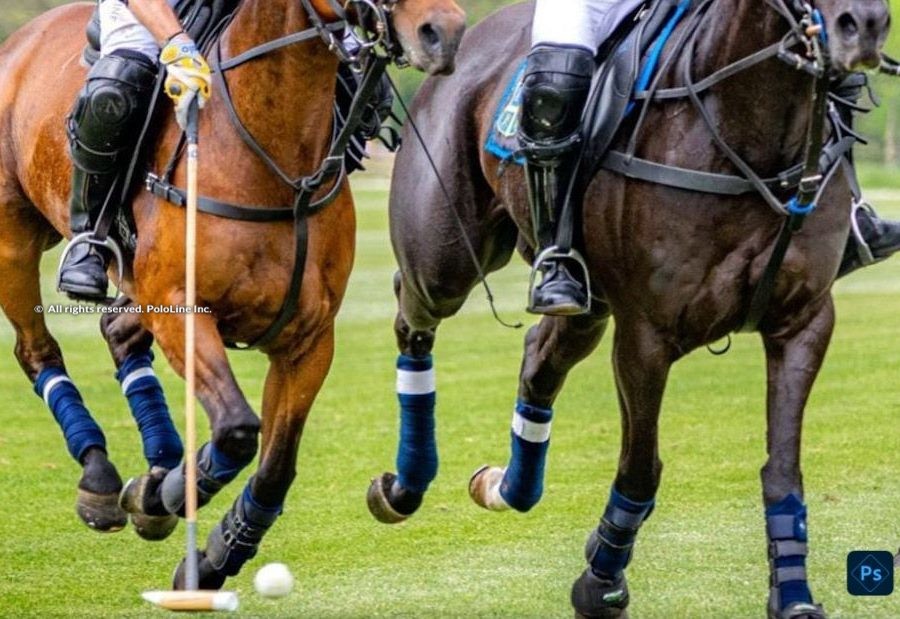By Prof. Eduardo Amaya
The grip or hold on the mallet is not just an instinctive gesture; it is a precision control system that directly influences the quality of the swing, the sensitivity of the hit, and the stability of the wrist. It is the communication between the player and the mallet. Once the strap is placed on the hand, the mallet should be held diagonally across the palm at the base of the fingers (etacarpophalangeal joints), with the index finger in a trigger position.
Each finger serves a specific purpose, and understanding this role allows for correcting mistakes, refining technique, and releasing unnecessary tension — this is precisely the role of us, the instructors.
The grip on the mallet should, as a principle, be firm but flexible, just like in other sports that involve a racket or golf club. Gripping the mallet too tightly prevents free acceleration of the swing and causes stiffness in the wrist and arm.
On the other hand, a grip that’s too loose reduces control and precision. The perfect balance lies in the functional distribution of force among the fingers. All fingers except the thumb are involved in lifting the mallet.
1) THE THUMB
Direction and Anchor
The thumb stabilizes the mallet from the inside of the handle or grip. Its main function is not to squeeze but to anchor and guide. Properly positioned, it provides direction to the swing and serves as a reference axis, especially for the backhand (mallet side) and the forehand (riding side), adding power to these strokes.
The key is to rest the relaxed thumb on the handle, pointing forward. It presses lightly against the grip, usually with the pad or slightly along the side, working as a stabilizer together with the index finger. Its position helps prevent the mallet from twisting or slipping out of the hand accidentally. Together with the index finger, it controls the lateral movements of the mallet.
2) THE INDEX FINGER
Fine Control
This is the finger that “feels the mallet” the most. Its role is precision—adjusting angle and power—especially in conjunction with the second metacarpal joint (the knuckle). This finger should not strangle the handle, but rather accompany the movement. It guides the mallet’s path. It’s key to keep it relaxed and flexible, as if following through until the moment of impact with the ball, when it naturally firms up. Keeping it stiff throughout the swing tightens the wrist.
I always stress the importance of the index finger’s position: the third phalanx (tip) should peek out below the grip—slightly, not excessively. The second phalanx supports the mallet (trigger grip), and the first phalanx pushes.
During short strokes (dribbling), the index finger points and powers the forward motion of the mallet while the middle, ring, and pinky fingers act in the opposite direction on the mallet grip, creating a backward lever effect for a short, accurate hit, together with wrist action.
3) THE MIDDLE FINGER
Pivot of the Grip
It provides strength and security to the grip—this is the biomechanical center of the hold.
Its position and tone determine the pivot point of the mallet, actively participating in energy transfer during the swing. It’s a strong finger, designed to hold without tensing. Along with the ring
and pinky fingers, it holds the mallet against the palm. It acts as a bridge finger, working in coordination with the thumb and ring finger to form the structural clamp of the swing. It is the master finger of balance.
4) THE RING FINGER
Base of Stability
This finger provides support and stability from underneath the grip. It assists in controlling the mallet throughout the entire swing, especially in the follow-through phase. Its tone determines whether the mallet is released smoothly or strikes the ground or ball abruptly. When activated (without squeezing), this finger “embraces” the mallet without overpowering it. Leaving it passive destabilizes the shot.
5) THE PINKY FINGER
Dynamic Balance
Often underestimated, the pinky balances the grip during quick mallet movements—it makes last-second fine adjustments, especially in tight plays. It also contributes to the elastic extension of the swing in the follow-through, or final inertial flick.
That’s why it’s essential to feel it as part of the rhythm of the mallet, especially at the end of the swing.
The Symphony of the Grip
When each finger fulfills its role, the grip becomes an integrated system that enables a free, controlled, and precise swing. The player’s body stops forcing movement and begins to flow. The wrist moves freely, the arm follows, and the mallet becomes a natural extension of the body.
Practical Exercise
You should feel each finger as follows:
Hold the mallet with your eyes closed and try to feel which finger grips more and which grips less.
Then relax your grip and begin activating each finger individually, from pinky to thumb.
Try to find a point of balance where the mallet feels comfortable and stable, without needing to squeeze.
Finally, practice soft swings focusing on which finger guides the mallet, which supports it, and which accompanies it.
In gripping the mallet, we go beyond simply holding it — we learn which part of the hand guides and which part supports.
As you can see, each finger plays a specific role that contributes to control, precision, and power in your stroke.
